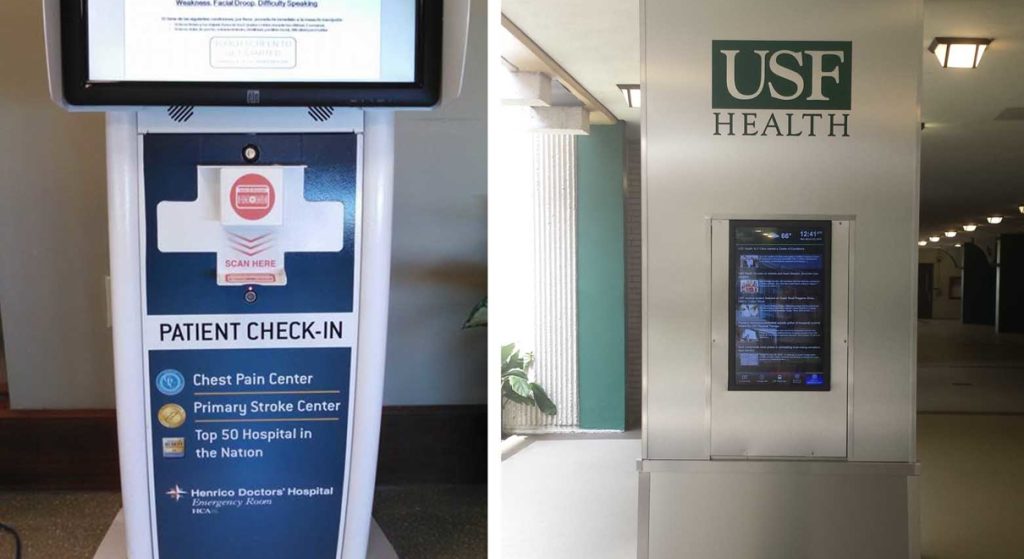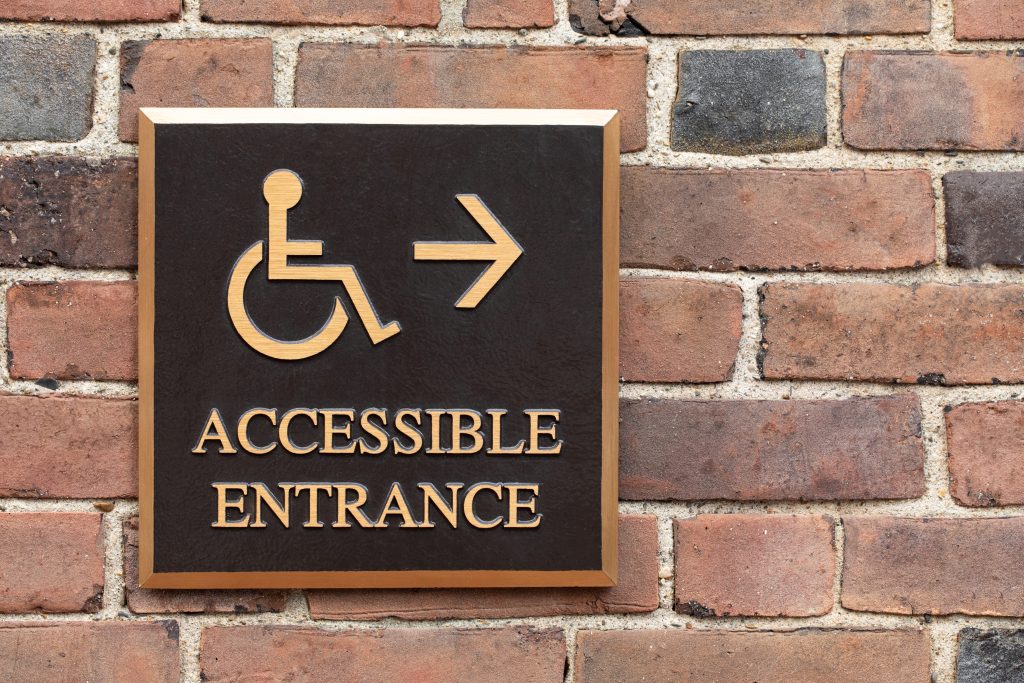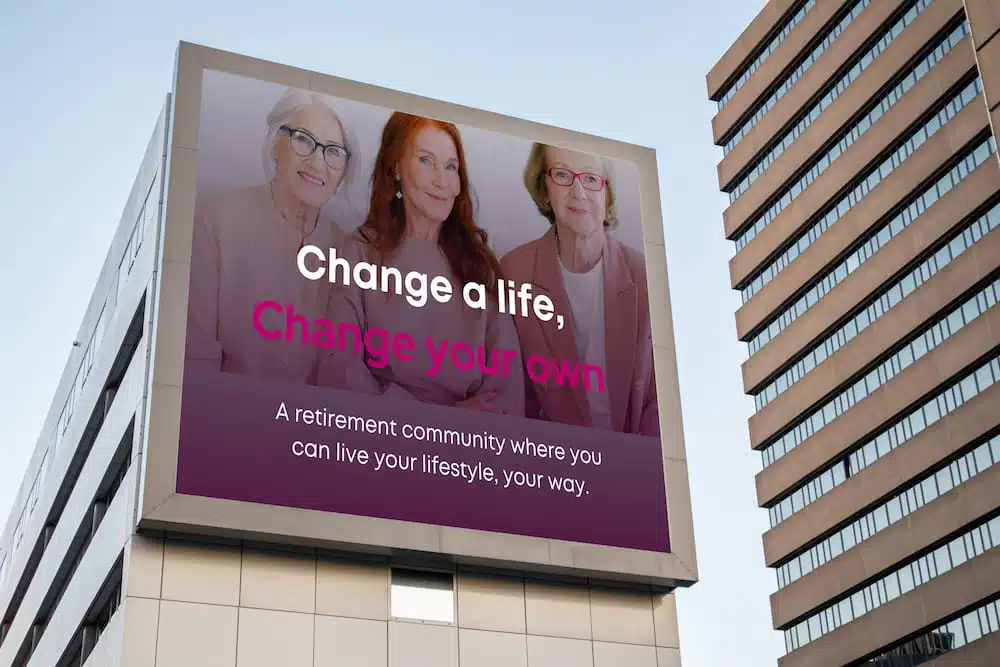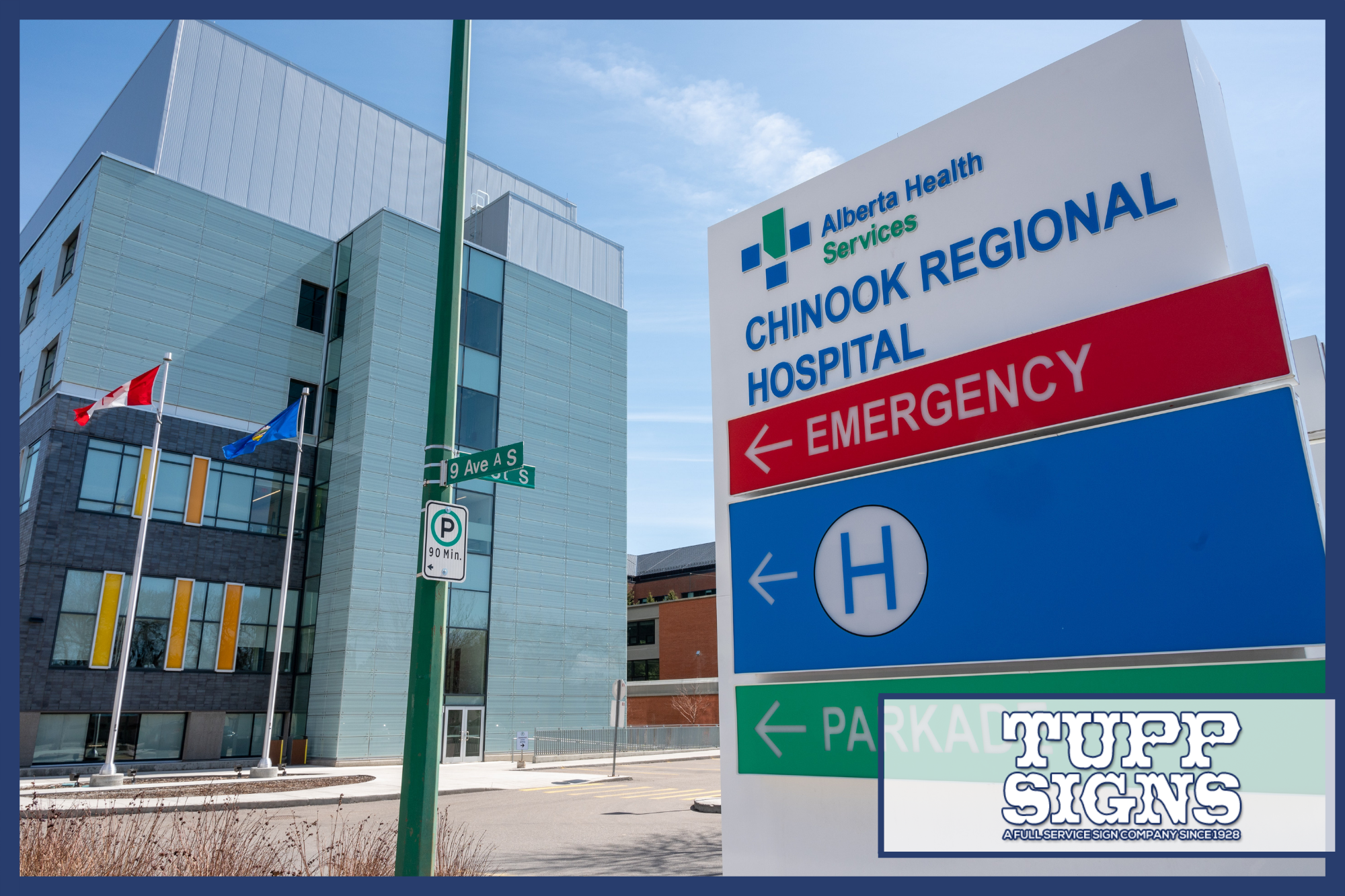Enhancing Visibility and Awareness: The Power of Signage in Healthcare
Significance of On-Site Signage in Medical Settings
First impressions are pivotal. For medical facilities, on-site signage serves as the initial handshake with the community, conveying professionalism and trust. It’s not just a marker of location; it’s a beacon for those seeking care. Effective signage guides patients efficiently, reducing stress in critical moments. Moreover, it’s a silent ambassador, reflecting the facility’s commitment to healthcare excellence.
Digital Roadside Signage: A Dynamic Tool for Public Health Messaging
Digital roadside signage stands as a modern herald in the healthcare landscape. It’s a versatile platform, broadcasting vital health alerts, wellness tips, and services offered, all in real-time. This technology captures the attention of passersby with vibrant displays, making it an indispensable tool for enhancing public health awareness. By leveraging this dynamic medium, medical facilities can foster an informed and healthier community.

Understanding Digital Roadside Signage
Definition and Components
Digital roadside signage, a dynamic communication tool, comprises high-resolution displays, robust content management systems, and real-time data integration capabilities. These signs, engineered for maximum visibility, are pivotal in conveying timely information to passersby.
Advantages Over Traditional Signage
Unquestionably superior, digital signage offers unparalleled flexibility in content updates, captivating visuals, and interactive possibilities. Its ability to adapt swiftly to changing information eclipses static traditional signage, making it a strategic asset for any on-business communication.
Role in Healthcare Communication
In the realm of healthcare, digital signage serves as a beacon of vital information, guiding patients with ease. It streamlines communication, promotes health services, and provides essential public health notifications, thereby enhancing the overall patient experience.
Planning and Strategy for Enhanced Patient Engagement
Assessing the Need for Digital Roadside Signage
Understanding the unique requirements of a medical facility begins with a thorough assessment. Digital roadside signage is not just a marker; it’s a vital communication tool. It guides patients and visitors efficiently, reducing stress and enhancing the overall experience. The need is clear: signage must be impactful, informative, and reassuring.
Setting Objectives for Digital Signage Campaigns
Objectives for digital signage are twofold: to inform and to engage. Whether it’s guiding visitors to the right department or promoting health awareness, each campaign must have clear, measurable goals. A successful digital signage strategy can reduce perceived wait times, improve patient flow, and broadcast critical health messages.
Target Audience Analysis for Effective Message Delivery
Every message must reach the right audience. In a medical setting, this means understanding patient demographics, visitor concerns, and staff communication needs. Tailoring content to the audience ensures that each digital sign serves a purpose, whether it’s providing peace of mind through wayfinding or educating on health services and facilities.
Designing Effective Digital Signage Content
Best Practices for Engaging and Informative Content
Creating content that captures attention while conveying crucial information is an art. Start with a clear, concise message. Use bold colors and dynamic imagery to grab the eye, but ensure that these elements do not overshadow the message. Balance is key; the content should be digestible at a glance, yet compelling enough to hold the viewer’s interest. Incorporate motion sparingly – a subtle animation can draw the viewer in without overwhelming them.
Visuals and Text: A Symbiotic Relationship
Visuals and text must work in harmony. High-quality images or videos can tell a story quickly, while text can offer necessary details. Choose fonts that are easy to read from a distance and colors that contrast well with the background. Remember, the goal is to enhance comprehension and retention, so prioritize clarity over decorative fonts or complex graphics.
Adhering to Healthcare Advertising Regulations
In the healthcare sector, compliance with advertising regulations is non-negotiable. Ensure that all digital signage content adheres to HIPAA guidelines and avoids making unsubstantiated claims. It’s essential to respect patient privacy and provide disclaimers where required. By staying informed about the latest regulations, you can design content that is not only effective but also ethically sound and legally compliant.

Optimizing Digital Signage for Medical Facilities
Hardware Essentials for Clarity and Continuity
High-resolution displays are paramount; they ensure that critical health messages are crystal clear. Robust, weather-resistant casings protect against the elements, while high-brightness screens combat glare. Each sign must be a beacon of reliability, powered by industrial-grade components designed for 24/7 operation.
Software Solutions for Streamlined Messaging
Content is king, and the right software empowers seamless management. With intuitive scheduling systems, updates are timely, ensuring that patients receive the most current information. Remote management capabilities are not just convenient—they’re essential for the dynamic environment of a medical facility.
Durability and Visibility: Non-Negotiables
Outdoor signage must withstand sun, rain, and temperature extremes. Anti-reflective and vandal-proof screens are not luxuries; they are necessities for maintaining visibility and integrity. In the healthcare context, a sign’s legibility can make all the difference—ensuring that every patient and visitor can navigate with ease.
Seamless Implementation of Digital Signage
Installation Steps
Embarking on the installation, we begin with a site assessment, ensuring optimal visibility and safety. Next, we anchor the digital signage securely, followed by meticulous wiring for power and connectivity. The final step is a rigorous systems check, guaranteeing flawless performance from day one.
Strategic Integration
Harmonizing with your facility’s marketing strategy, the digital signage becomes a cogent extension of your brand. We synchronize content with ongoing campaigns, leveraging this dynamic medium to enhance patient engagement and community presence.
Staff Training
Empowering your team, we provide comprehensive training on content management systems. This enables staff to swiftly update messaging, ensuring the information remains current and relevant, thus fostering an informed patient community.
Content Management for Enhanced Patient Engagement
Dynamic Content Updating Strategies
Embrace the power of agility. In the bustling environment of a medical facility, information changes rapidly. Implementing a robust content management system allows for swift updates, ensuring that patients and staff are informed with the latest health advisories, wait times, and facility maps. This adaptability not only reflects the facility’s commitment to current information but also reduces perceived wait times by engaging patients with fresh, relevant content.
Scheduling Content for Maximum Impact
Timing is critical. Schedule content to align with patient flow and high-traffic periods. Morning wellness tips, afternoon health reminders, and evening visiting hours can be programmed to automatically display at strategic times. This targeted approach ensures that the content resonates with the audience when they are most receptive, enhancing the overall patient experience and streamlining facility operations.
Real-Time Information in Signage Content
Leverage the now. Utilizing real-time data feeds, digital signage can transform into a hub of live information. From emergency alerts to real-time queue updates, this immediacy keeps patients and visitors informed and prepared, fostering a sense of trust and efficiency. In a world where time is of the essence, this integration of real-time information is not just a convenience—it’s a necessity for modern medical facilities.
Legal and Ethical Considerations for On-Premises Digital Signage
Privacy Laws and Patient Confidentiality
As experts in digital signage installation, we recognize the paramount importance of privacy. Our solutions are designed to comply with HIPAA and other privacy laws, ensuring that patient confidentiality is never compromised. We strategically position screens to prevent unauthorized viewing, safeguarding sensitive information.
Healthcare Advertising Regulations
Navigating the complex web of healthcare advertising regulations is a challenge we embrace. Our content management systems allow for easy updates, ensuring that your messaging remains compliant with the latest FTC guidelines. We help you communicate with patients while maintaining the highest ethical standards.
Accessibility and ADA Compliance
Accessibility is not an afterthought; it’s a priority. Our signage solutions meet ADA compliance, providing equal access to all. We consider height, location, and audio-visual elements to ensure that your signs are fully accessible, embodying the spirit of inclusivity that is at the heart of healthcare.

Measuring Effectiveness of Digital Signage
Metrics for Impact Assessment
Understanding the influence of digital signage is pivotal. We gauge success through metrics such as viewer traffic patterns, dwell time, and conversion rates. These indicators reveal the signage’s ability to attract and engage patients and visitors, guiding them effectively within medical facilities.
Engagement and Reach Tools
Advanced software tools track engagement, capturing data on how many eyes land on your message and for how long. Heat maps and connectivity with mobile devices offer insights into the reach of your content, ensuring your message resonates with the intended audience.
Feedback Analysis and Strategy Adaptation
Feedback is a treasure trove for improvement. We analyze patient and visitor interactions, using this data to refine messaging and visual appeal. Adapting strategies based on real-world feedback ensures that your digital signage remains a vital, responsive asset in your communication toolkit.
Maintenance and Troubleshooting for Digital Signage Systems
Routine Maintenance for Longevity
Ensuring the longevity of your digital signage begins with diligent routine maintenance. Regularly scheduled cleanings prevent dust and debris accumulation, which can lead to overheating. Software updates and backups are crucial, safeguarding against potential cyber threats and data loss. A proactive approach to maintenance not only extends the life of your signage but also guarantees consistent performance, a non-negotiable in the fast-paced environment of medical facilities.
Addressing Common Technical Issues
Technical glitches can disrupt the flow of vital information. Quick identification and resolution of issues such as screen malfunctions, connectivity problems, or software errors are imperative. Familiarize your team with troubleshooting protocols to address these common concerns swiftly, ensuring minimal downtime. Remember, a well-maintained digital sign is a reliable communication tool.
Establishing a Support System
A robust support system is the backbone of ongoing signage operation. Establish a dedicated team, well-versed in the nuances of your digital signage system, ready to tackle any challenges that arise. This team should be accessible, offering prompt assistance to keep your digital displays operational around the clock. In the healthcare setting, where information can be critical, a dependable support system is not just beneficial—it’s essential.
Enhancing Public Health Outreach with Digital Signage
Leveraging Digital Signage for Public Health Campaigns
Imagine a world where health education permeates every corner of our community spaces. Digital signage makes this a reality, transforming the way we disseminate vital health information. Crisp, dynamic displays capture attention, broadcasting essential public health messages that resonate with passersby. As installers, we ensure these high-definition screens are not just tools, but beacons of knowledge, guiding the public towards healthier choices.
Encouraging Community Involvement Through Interactive Signage
Interactive digital signage invites action. It’s a two-way conversation. Touch screens, QR codes, and real-time data feeds turn viewers into participants, fostering a sense of ownership in community health initiatives. We design these experiences to empower individuals, encouraging them to engage, learn, and share their insights, creating a ripple effect of awareness and action.

Case Examples of Successful Digital Signage in Healthcare Awareness
Success stories abound. In one urban clinic, digital signage reduced perceived wait times, simultaneously educating patients on preventive care. Another campaign saw a marked increase in flu vaccinations after an interactive display detailed the vaccine’s benefits. These cases exemplify the profound impact of well-placed, content-rich digital signage in enhancing public health literacy and outcomes.
Optimizing On-Site Communication with Strategic Vendor Partnerships
Criteria for Selecting a Digital Signage Vendor
When choosing a digital signage vendor, prioritize reliability, user-friendly software, and a robust content management system. Seek out vendors with a proven track record in healthcare settings, ensuring they understand the nuances of medical facility needs. Consider the scalability of solutions, as the dynamic environment of medical facilities requires adaptable signage options. Above all, select a vendor that aligns with your facility’s vision for patient communication and engagement.
Building a Collaborative Relationship with Vendors
Forge a partnership rooted in mutual understanding and clear communication. Establish regular check-ins to discuss updates, troubleshoot issues, and explore innovations. A vendor that acts as a consultant, rather than just a provider, will contribute significantly to the success of your digital signage strategy. Collaboration is key; your vendor should be as invested in enhancing patient experience as you are.
Evaluating Vendor Support and Service Agreements
Assess the vendor’s support structure meticulously. Look for 24/7 technical support, responsive customer service, and comprehensive training programs. Service agreements should be transparent, with clear terms regarding maintenance, updates, and system uptime guarantees. A vendor that offers exceptional after-sales support will ensure your digital signage network remains a reliable communication tool within your medical facility.
Budgeting and Financial Considerations for Enhanced Patient Engagement
Cost Analysis of Digital Roadside Signage Implementation
Embarking on the digital transformation journey, the initial investment in roadside digital signage is a pivotal consideration. A comprehensive cost analysis reveals that while upfront expenses encompass hardware, software, and installation, the long-term benefits—increased visibility and patient engagement—justify the outlay. Advanced planning ensures that the signage not only meets regulatory compliance but also aligns with your facility’s aesthetic and functional requirements.
Exploring Financing Options and Budgeting for Ongoing Costs
Financing options for digital signage are as varied as the solutions themselves. Leasing arrangements can mitigate the initial financial impact, spreading costs over time and preserving capital for other investments. Budgeting for ongoing costs—such as maintenance, content updates, and energy consumption—is crucial for uninterrupted operation. A strategic financial plan, tailored to your facility’s cash flow, will ensure the signage remains a dynamic, rather than a static, asset.

ROI Considerations for Digital Signage in Medical Facilities
Calculating the return on investment (ROI) for digital signage in medical settings goes beyond mere numbers. It encompasses enhanced patient experience, streamlined communication, and reinforced branding. The ROI materializes through increased patient throughput, improved satisfaction scores, and a strengthened reputation in the community. When patients feel informed and valued, they’re more likely to return and recommend your services, driving both top-line growth and bottom-line results.
Table of Contents
Toggle

